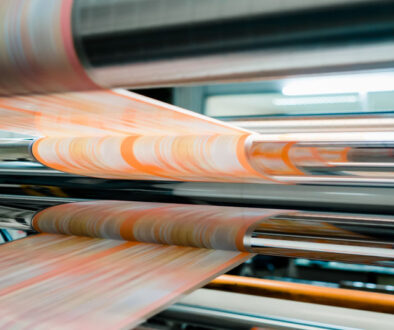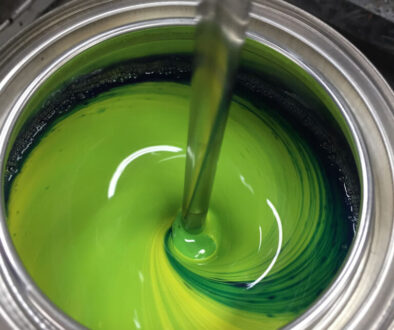The Differences Between Flexo and Gravure Ink Applications

The Different Applications of Flexographic and Gravure Inks
Flexo and Gravure inks can be found in many different parts of the printing world. We have covered what these two versatile and prolific water-based inks are and how they work in previous articles. Now, we’re going to take a closer look at the specific applications of these different types of ink, and how Gellner can improve their properties.
Where can you find Flexographic Inks?
Flexographic inks, or Flexo inks, are commonly found in marketing labels, booklets, packaging, and much more. Because they are low cost and often very environmentally friendly, they are very popular and widely used.
This is also an extremely flexible type of ink, used in printing on a variety of different materials. Flexo inks can print on materials such as plastic, foil, acetate film, brown paper, cardboard, and many materials used commonly in packaging. Think of products like:
- Shopping bags
- Food Take-out bags
- Beverage cartons such as milk or juice cartons
- Adhesive labels
- Wallpaper
- Disposable cups
- Labels for products like canned drinks, bottled drinks, and more
- Aluminum foil wraps
Newspapers have also recently begun to use Flexography in favor of old printing methods, as have companies that produce wrapping paper, envelopes, and business forms. Nearly everywhere you see a colorful product label, some sort of marketing booklet, or a shopping bag, you can see the results of flexography.
Where can you find Gravure inks?
Gravure inks are not as common as Flexo inks, due to their higher costs; however they are very useful for long-run printings of high quality, sharp images. These inks are most popular in press runs for magazines, catalogs, inserts, and other mass-circulation periodicals because of the sharp, quality images it produces. They’re also widely used in flexible packaging, especially for food products, like brands for potato chip bags and other snack foods.
Some other popular uses for gravure inks are:
- Postcards
- Corrugated cardboard
- Postage stamps
- Passports
- Wallpapers
- Sheet music
- Fabrics
- Maps
Like Flexo inks, Gravure inks and Gravure printing have a wide variety of uses and applications, especially for higher-resolution images. Water-based Gravure inks are also very popular as they are safer and more environmentally friendly.
What role do polymers play in Flexo and Gravure inks?
Gellner has developed several acrylic polymers for Flexographic inks that improve their adhesion to non-porous surfaces, like vinyl and polypropylene (a type of soft plastic often used for items such as yogurt cups and water bottles), as well as different metals, and glass. Our specialized polymers can also offer alkali resistance, while still maintaining press open time for these flexo inks.
If you’re looking for polymers to improve your Flexo or Gravure inks, then consider looking through some of Gellner’s products, including but not limited to:
- Ottopol SX-75: This emulsion has good gloss for both types of inks
- Ottopol K-633 and Ottopol K-362: These polymers offers great alkali resistance and adhesion to non-porous substrates
- Ottopol K-65: Another emulsion polymer that offers excellent alkali resistance
Why choose Gellner?
Gellner Industrial is an industry-leading manufacturer of water-based acrylic polymers. With over 42 years of experience under our belts, we bring vast knowledge and experience in polymers and their many applications to our customers.
Check out our list of acrylic polymers on our website for more information on the many different products we can offer you.



